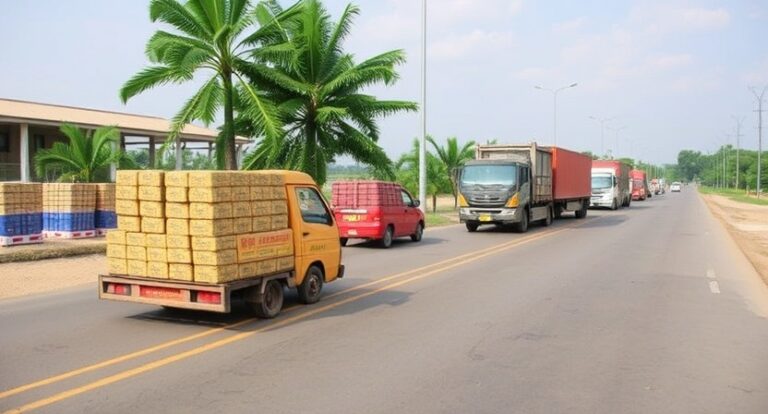Cambodia’s manufacturing sector is undergoing a transformative phase, with significant improvements in its supply chain processes. From sourcing raw materials to delivering finished products, the country is enhancing efficiency and reliability, making it an attractive destination for global manufacturers and Asia agents. This blog explores how Cambodia is streamlining its supply chain and what it means for the manufacturing industry.
The Role of Cambodia in Global Supply Chains
1. Strategic Location in Southeast Asia
Cambodia’s geographic location offers excellent connectivity to major markets in Asia, Europe, and North America. Situated near key trade routes, the country serves as a critical hub for transporting goods, reducing transit times and costs for manufacturers.2. Access to Raw Materials
Cambodia’s proximity to countries like Vietnam, Thailand, and China ensures a steady supply of raw materials. This regional network supports industries like textiles, footwear, and electronics, enabling manufacturers to maintain production schedules efficiently.3. Trade Agreements Boosting Competitiveness
The country benefits from preferential trade agreements, such as the Everything But Arms (EBA) initiative and bilateral agreements with neighboring nations. These agreements lower tariffs and enhance Cambodia’s appeal as a manufacturing destination.Key Steps in Streamlining Cambodia’s Supply Chain
1. Infrastructure Development
Investments in infrastructure, including roads, ports, and airports, are improving logistics and reducing bottlenecks. Key projects like the Sihanoukville Port expansion and the Phnom Penh–Sihanoukville Expressway are enhancing connectivity and speeding up the movement of goods.2. Technology Integration
The adoption of digital tools and technologies is revolutionizing Cambodia’s supply chain management. From inventory tracking to real-time shipment monitoring, these innovations help Asia agents and manufacturers optimize operations and reduce waste.3. Workforce Training
To support advanced supply chain processes, Cambodia is investing in workforce training programs. These initiatives focus on equipping workers with skills in logistics, quality control, and technology, ensuring they can meet the demands of modern manufacturing.Key Industries Leveraging Streamlined Supply Chains
1. Textile and Apparel
The textile and apparel industry, a cornerstone of Cambodia’s economy, is reaping the benefits of an efficient supply chain. Improved access to raw materials and faster production cycles enable the sector to meet global demand.2. Electronics and Electrical Components
As an emerging player in electronics manufacturing, Cambodia is leveraging streamlined supply chains to attract Asia agents and global firms. Efficient processes help reduce lead times and enhance product quality.3. Footwear and Accessories
Footwear manufacturers benefit from Cambodia’s focus on supply chain optimization, which ensures timely delivery of raw materials and finished products to international markets.Challenges and Future Opportunities
Challenges
- Logistical Gaps: Despite improvements, some rural areas still lack adequate infrastructure, posing challenges for transportation and distribution.
- Regulatory Hurdles: Simplifying customs procedures and reducing bureaucracy remain critical for improving supply chain efficiency.
Opportunities
- Public-Private Partnerships: Collaborations between the government, Asia agents, and private firms can address logistical and regulatory challenges effectively.
- Green Supply Chains: Embracing sustainable practices, such as reducing carbon emissions and waste, can enhance Cambodia’s global reputation and attract environmentally conscious investors.

